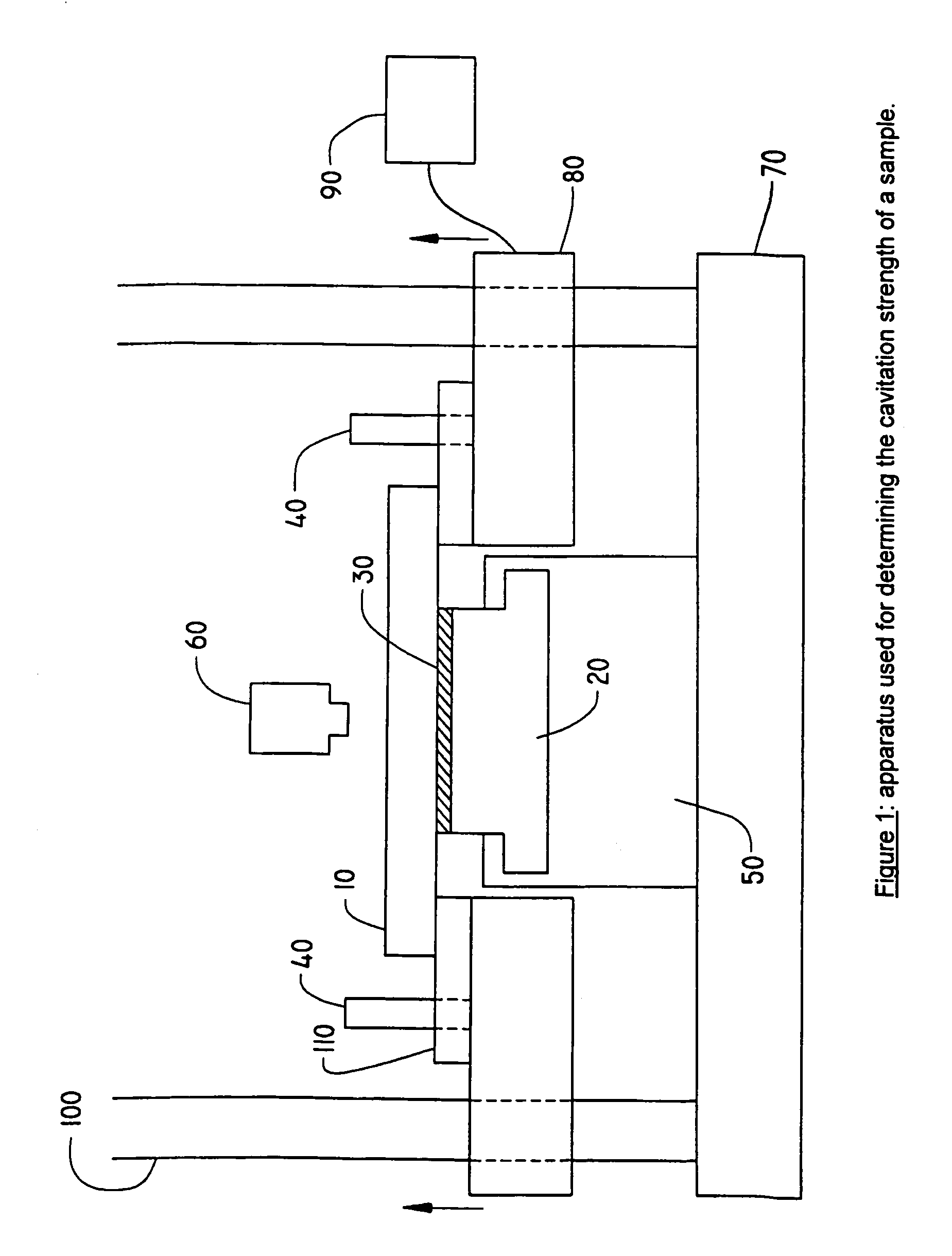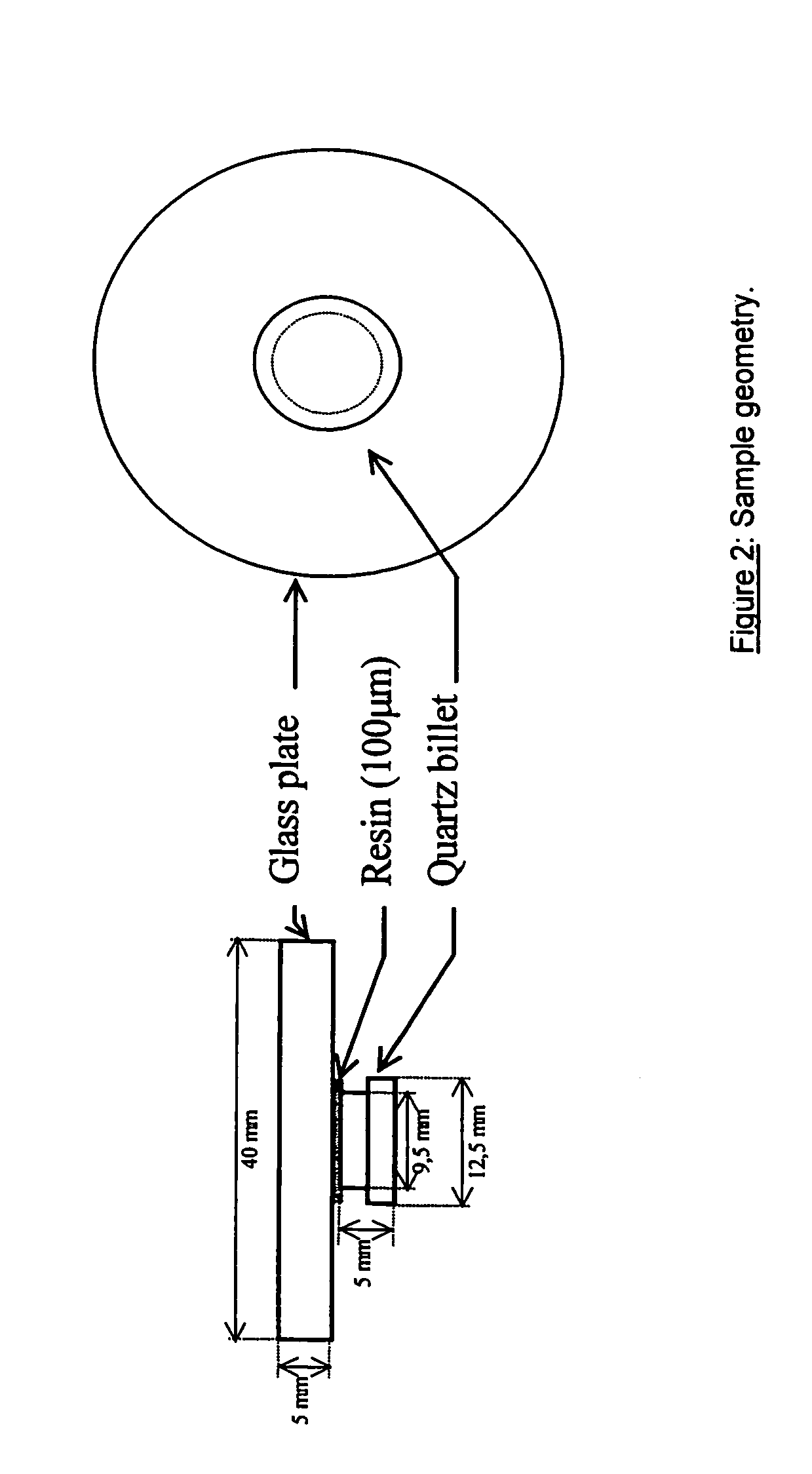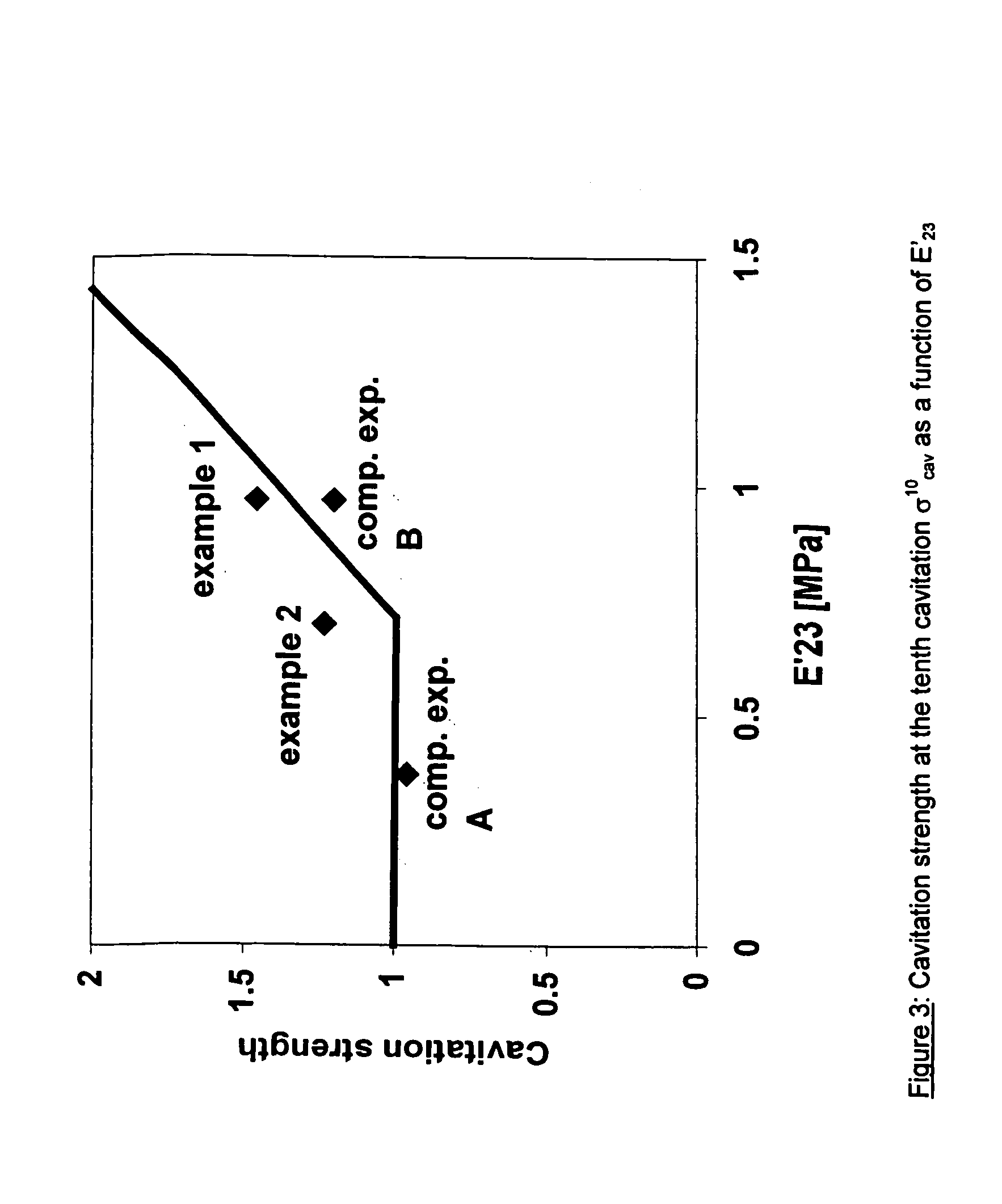Coated optical fibers
a technology of optical fibers and coatings, applied in the direction of synthetic resin layered products, polyurea/polyurethane coatings, textiles and paper, etc., can solve the problems of reducing the strength of the coating, increasing the transmission loss of the optical fiber, and compromising the integrity of the coating, etc., to achieve a high cavitation strength and low modulus
- Summary
- Abstract
- Description
- Claims
- Application Information
AI Technical Summary
Benefits of technology
Problems solved by technology
Method used
Image
Examples
experiment b and example 1
Comparitive Experiment B and Example 1
[0228]A commercial coating with an equilibrium modulus of 1.0 MPa was used. In comparative experiment B, the sample was cured using a dose of 1 J / cm2. The cavitation strength measured at the occurrence of the cavitation was 1.21 MPa. The storage modulus E′ at 23° C. of the coating E′23 is 0.97 MPa. Hence, the value of σ10 / E′23 was 1.25, Go=22 J / m2.
[0229]In Example 1, the sample was first cured with three short flashes of UV-light (in total about 1 cJ / cm2 or less), whereafter the sample was cured at 1 J / cm2 (as described in the Description of Test Methods above). A laboratory Macam lamp which is a 400 W metal halide lamp (Macam, Flexicure system) is used to pre-cure the sample (the three short flashes of 1 cJ / cm2 or less in total): UV-light is fed into the cell by a liquid filled light guide, resulting in a cut-off of the wavelengths below 260 nm.
[0230]The cavitation strength of the coating of Example 1 measured at the tenth cavity σ10 was 1.47 M...
example 2
[0232]A coating was formulated using 69.7 wt % of a polyether urethane acrylate oligomer having a polyether backbone comprising on average two blocks polypropylene glycol having an average Mw of about 4000 and being end-capped with ethoxy groups (the oligomer is the reaction product of a polyether polyol, toluene diisocyanate and 2-hydroxyethyl acrylate), 20.4 wt % 2-phenoxyethyl acrylate, 6.4 wt % tripropyleneglycoldiacrylate, 2.0 wt. % Lucerin TPO, 0.3 wt % DC190, 0.2 wt % DC57 and 1 wt % mercapto silane.
[0233]The equilibrium modulus was 0.6 MPa. The modulus E′ at 23° C. was 0.7 MPa. The relative Mooney plot is given in FIG. 4. The cavitation strength at the tenth cavity σ10 was measured to be 1.24 MPa after 1 J / cm2 cure (see FIG. 3); the σ10 / E′23 was 1.77; Go=31 J / m2.
example 3
[0234]A primary coating composition was formulated using 38.8 wt % of an aliphatic polyether-polycarbonate based urethane acrylate oligomer having an average Mw of 4000 (the oligomer is derived from 2-hydroxyethylacrylate, isophoronediisocyanate, and equal amounts of polypropyleneglycol diol and a copolymer diol of 10–15 wt % polyether / 85–90 wt % polycarbonate), 48.5 wt % of N butylurethane O ethyl acrylate (CL1039), 9.7 wt. % isodecyl acrylate and 3 wt % of Irgacure 184 photoinitiator.
[0235]The equilibrium modulus is 1.31 MPa. The calculated volumetric thermal expansion coefficient α23 is 6.74×10−4 K−1.
PUM
| Property | Measurement | Unit |
|---|---|---|
| storage modulus | aaaaa | aaaaa |
| storage modulus | aaaaa | aaaaa |
| storage modulus | aaaaa | aaaaa |
Abstract
Description
Claims
Application Information
 Login to View More
Login to View More - R&D
- Intellectual Property
- Life Sciences
- Materials
- Tech Scout
- Unparalleled Data Quality
- Higher Quality Content
- 60% Fewer Hallucinations
Browse by: Latest US Patents, China's latest patents, Technical Efficacy Thesaurus, Application Domain, Technology Topic, Popular Technical Reports.
© 2025 PatSnap. All rights reserved.Legal|Privacy policy|Modern Slavery Act Transparency Statement|Sitemap|About US| Contact US: help@patsnap.com



